Marcos Quinones-Grueiro
On the Design of Safe Continual RL Methods for Control of Nonlinear Systems
Feb 21, 2025



Abstract:Reinforcement learning (RL) algorithms have been successfully applied to control tasks associated with unmanned aerial vehicles and robotics. In recent years, safe RL has been proposed to allow the safe execution of RL algorithms in industrial and mission-critical systems that operate in closed loops. However, if the system operating conditions change, such as when an unknown fault occurs in the system, typical safe RL algorithms are unable to adapt while retaining past knowledge. Continual reinforcement learning algorithms have been proposed to address this issue. However, the impact of continual adaptation on the system's safety is an understudied problem. In this paper, we study the intersection of safe and continual RL. First, we empirically demonstrate that a popular continual RL algorithm, online elastic weight consolidation, is unable to satisfy safety constraints in non-linear systems subject to varying operating conditions. Specifically, we study the MuJoCo HalfCheetah and Ant environments with velocity constraints and sudden joint loss non-stationarity. Then, we show that an agent trained using constrained policy optimization, a safe RL algorithm, experiences catastrophic forgetting in continual learning settings. With this in mind, we explore a simple reward-shaping method to ensure that elastic weight consolidation prioritizes remembering both safety and task performance for safety-constrained, non-linear, and non-stationary dynamical systems.
FT-AED: Benchmark Dataset for Early Freeway Traffic Anomalous Event Detection
Jun 24, 2024Abstract:Early and accurate detection of anomalous events on the freeway, such as accidents, can improve emergency response and clearance. However, existing delays and errors in event identification and reporting make it a difficult problem to solve. Current large-scale freeway traffic datasets are not designed for anomaly detection and ignore these challenges. In this paper, we introduce the first large-scale lane-level freeway traffic dataset for anomaly detection. Our dataset consists of a month of weekday radar detection sensor data collected in 4 lanes along an 18-mile stretch of Interstate 24 heading toward Nashville, TN, comprising over 3.7 million sensor measurements. We also collect official crash reports from the Nashville Traffic Management Center and manually label all other potential anomalies in the dataset. To show the potential for our dataset to be used in future machine learning and traffic research, we benchmark numerous deep learning anomaly detection models on our dataset. We find that unsupervised graph neural network autoencoders are a promising solution for this problem and that ignoring spatial relationships leads to decreased performance. We demonstrate that our methods can reduce reporting delays by over 10 minutes on average while detecting 75% of crashes. Our dataset and all preprocessing code needed to get started are publicly released at https://vu.edu/ft-aed/ to facilitate future research.
MARVEL: Multi-Agent Reinforcement-Learning for Large-Scale Variable Speed Limits
Oct 18, 2023



Abstract:Variable speed limit (VSL) control is a promising traffic management strategy for enhancing safety and mobility. This work introduces MARVEL, a multi-agent reinforcement learning (MARL) framework for implementing large-scale VSL control on freeway corridors using only commonly available data. The agents learn through a reward structure that incorporates adaptability to traffic conditions, safety, and mobility; enabling coordination among the agents. The proposed framework scales to cover corridors with many gantries thanks to a parameter sharing among all VSL agents. The agents are trained in a microsimulation environment based on a short freeway stretch with 8 gantries spanning 7 miles and tested with 34 gantries spanning 17 miles of I-24 near Nashville, TN. MARVEL improves traffic safety by 63.4% compared to the no control scenario and enhances traffic mobility by 14.6% compared to a state-of-the-practice algorithm that has been deployed on I-24. An explainability analysis is undertaken to explore the learned policy under different traffic conditions and the results provide insights into the decision-making process of agents. Finally, we test the policy learned from the simulation-based experiments on real input data from I-24 to illustrate the potential deployment capability of the learned policy.
A Reinforcement Learning Approach for Robust Supervisory Control of UAVs Under Disturbances
May 21, 2023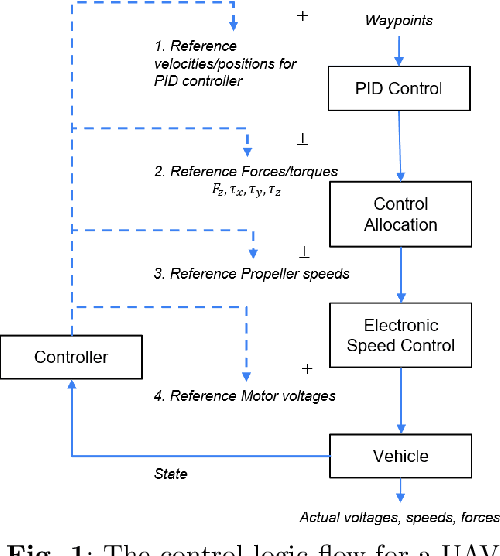
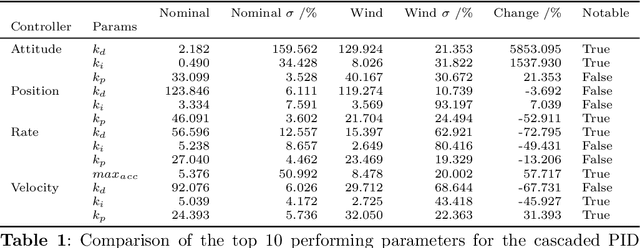
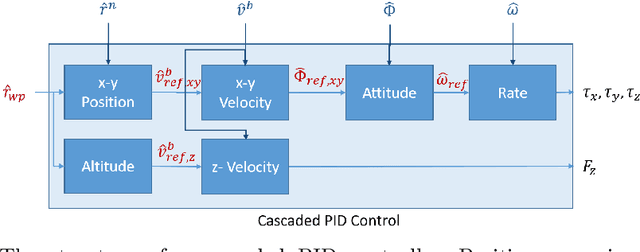
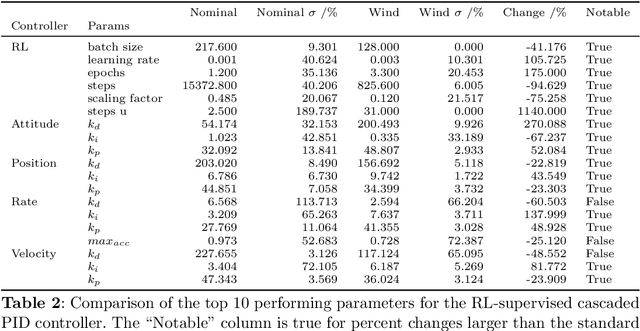
Abstract:In this work, we present an approach to supervisory reinforcement learning control for unmanned aerial vehicles (UAVs). UAVs are dynamic systems where control decisions in response to disturbances in the environment have to be made in the order of milliseconds. We formulate a supervisory control architecture that interleaves with extant embedded control and demonstrates robustness to environmental disturbances in the form of adverse wind conditions. We run case studies with a Tarot T-18 Octorotor to demonstrate the effectiveness of our approach and compare it against a classic cascade control architecture used in most vehicles. While the results show the performance difference is marginal for nominal operations, substantial performance improvement is obtained with the supervisory RL approach under unseen wind conditions.
Model-based adaptation for sample efficient transfer in reinforcement learning control of parameter-varying systems
May 20, 2023Abstract:In this paper, we leverage ideas from model-based control to address the sample efficiency problem of reinforcement learning (RL) algorithms. Accelerating learning is an active field of RL highly relevant in the context of time-varying systems. Traditional transfer learning methods propose to use prior knowledge of the system behavior to devise a gradual or immediate data-driven transformation of the control policy obtained through RL. Such transformation is usually computed by estimating the performance of previous control policies based on measurements recently collected from the system. However, such retrospective measures have debatable utility with no guarantees of positive transfer in most cases. Instead, we propose a model-based transformation, such that when actions from a control policy are applied to the target system, a positive transfer is achieved. The transformation can be used as an initialization for the reinforcement learning process to converge to a new optimum. We validate the performance of our approach through four benchmark examples. We demonstrate that our approach is more sample-efficient than fine-tuning with reinforcement learning alone and achieves comparable performance to linear-quadratic-regulators and model-predictive control when an accurate linear model is known in the three cases. If an accurate model is not known, we empirically show that the proposed approach still guarantees positive transfer with jump-start improvement.
Concurrent Policy Blending and System Identification for Generalized Assistive Control
May 19, 2022



Abstract:In this work, we address the problem of solving complex collaborative robotic tasks subject to multiple varying parameters. Our approach combines simultaneous policy blending with system identification to create generalized policies that are robust to changes in system parameters. We employ a blending network whose state space relies solely on parameter estimates from a system identification technique. As a result, this blending network learns how to handle parameter changes instead of trying to learn how to solve the task for a generalized parameter set simultaneously. We demonstrate our scheme's ability on a collaborative robot and human itching task in which the human has motor impairments. We then showcase our approach's efficiency with a variety of system identification techniques when compared to standard domain randomization.
Performance-Weighed Policy Sampling for Meta-Reinforcement Learning
Dec 10, 2020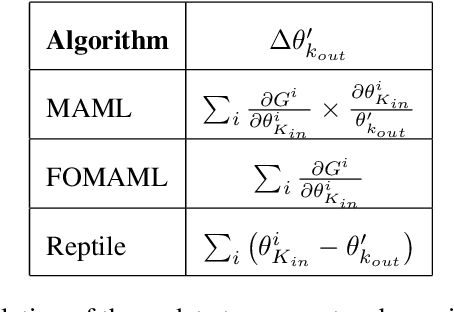
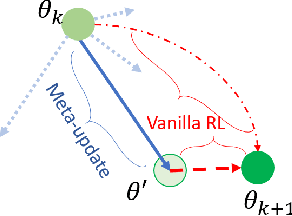
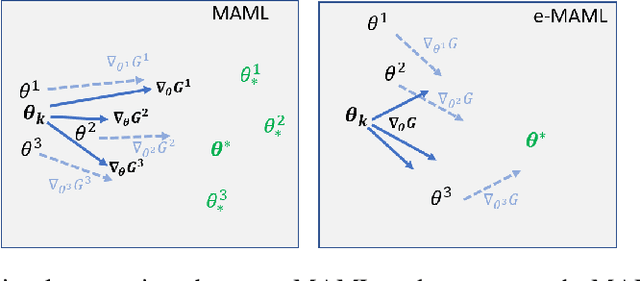
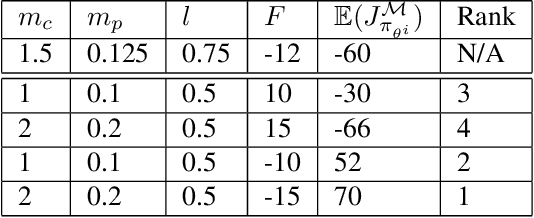
Abstract:This paper discusses an Enhanced Model-Agnostic Meta-Learning (E-MAML) algorithm that generates fast convergence of the policy function from a small number of training examples when applied to new learning tasks. Built on top of Model-Agnostic Meta-Learning (MAML), E-MAML maintains a set of policy parameters learned in the environment for previous tasks. We apply E-MAML to developing reinforcement learning (RL)-based online fault tolerant control schemes for dynamic systems. The enhancement is applied when a new fault occurs, to re-initialize the parameters of a new RL policy that achieves faster adaption with a small number of samples of system behavior with the new fault. This replaces the random task sampling step in MAML. Instead, it exploits the extant previously generated experiences of the controller. The enhancement is sampled to maximally span the parameter space to facilitate adaption to the new fault. We demonstrate the performance of our approach combining E-MAML with proximal policy optimization (PPO) on the well-known cart pole example, and then on the fuel transfer system of an aircraft.
Complementary Meta-Reinforcement Learning for Fault-Adaptive Control
Sep 26, 2020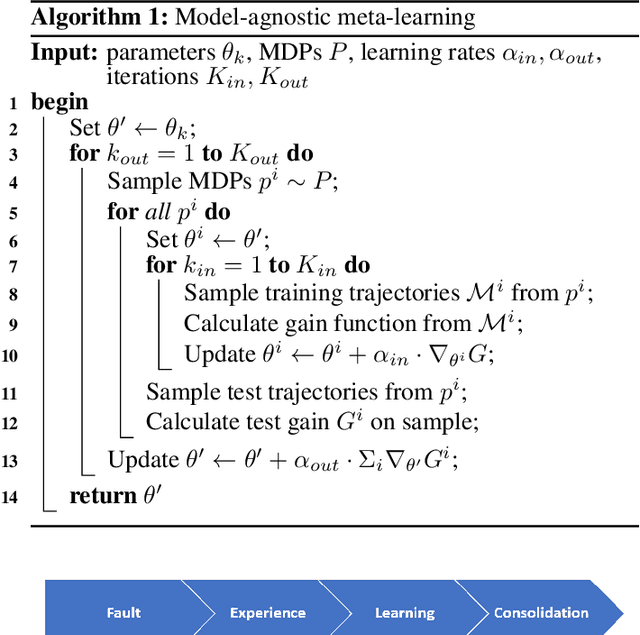
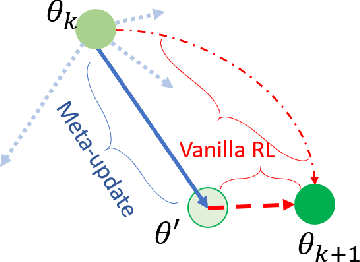


Abstract:Faults are endemic to all systems. Adaptive fault-tolerant control maintains degraded performance when faults occur as opposed to unsafe conditions or catastrophic events. In systems with abrupt faults and strict time constraints, it is imperative for control to adapt quickly to system changes to maintain system operations. We present a meta-reinforcement learning approach that quickly adapts its control policy to changing conditions. The approach builds upon model-agnostic meta learning (MAML). The controller maintains a complement of prior policies learned under system faults. This "library" is evaluated on a system after a new fault to initialize the new policy. This contrasts with MAML, where the controller derives intermediate policies anew, sampled from a distribution of similar systems, to initialize a new policy. Our approach improves sample efficiency of the reinforcement learning process. We evaluate our approach on an aircraft fuel transfer system under abrupt faults.
 Add to Chrome
Add to Chrome Add to Firefox
Add to Firefox Add to Edge
Add to Edge